FRATERNAL HEALTH & SAFETY INITIATIVE


Fentanyl is a potent synthetic opioid.
Fentanyl is a national public health crisis. People, especially young people, are ingesting illegally manufactured fentanyl without knowing it and dying at alarming rates as a result.
Fentanyl is very cheap and extremely addictive. Drug dealers are dangerously mixing illegally made fentanyl with, and disguising it as, other common drugs like oxy, percocet and xanax to increase profits. This process is not regulated and does not undergo any kind of quality control. Drug users have no way of knowing what they are getting in illegally purchased drugs, and as little as two milligrams of fentanyl (two grains of sand) can kill a person.
Fentanyl is everywhere: an estimated 250-500 million pills made with fentanyl are in circulation in the U.S. at any time. This doesn’t even account for powder drugs made with fentanyl such as cocaine, MDMA (molly/ecstasy), or heroin.
The practice of cutting drugs with fentanyl is relatively new, so public awareness is low. Educating the public about this crisis is the first step to reversing the tragic outcomes.
Learn more about the dangers of fentanyl at fentanylawarenessday.org.
DopaGE standardizes and gamifies substance education to measurably reduce death and suffering related to substance use. Their GenZ-tailored content keeps students informed of up-to-date scientific, objective harm profiles of substances they may encounter throughout college and directly addresses mixed alcohol and drug use. In this way, we look forward to seeing life-saving results through their overdose prevention, recognition, and response modules. DopaGE’s cloud-based platform is easy to integrate with any existing LMS you are currently using. With the help of DopaGE, you can take the critical step toward ensuring all of your members overcome the overdose crisis to see their graduation day.
Designed for members, leaders, and advisors of fraternal organizations, this course will provide information on and create awareness of fentanyl as a dangerous substance. This course also allows learners to explore strategies to promote health and safety. This course should take 10 minutes to complete.
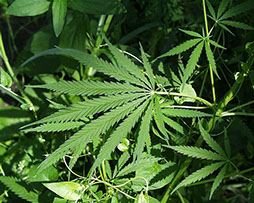
Marijuana has negative physical and mental effects. Physical effects include elevated blood pressure, a dry mouth and throat, bloodshot and swollen eyes, decrease in body temperature and increased appetite. Frequent and/or long-time users may develop chronic lung disease and damage to the pulmonary system.
Use of marijuana is also associated with impairment of short-term memory and comprehension, an altered sense of time, and a reduction in the ability to perform motor skills such as driving a car. Marijuana use also produces listlessness, inattention, withdrawal and apathy. It also can intensify underlying emotional problems and is associated with chronic anxiety, depression, and paranoia. More…

Spice, K2 and other “incense blends” are products that contain dried, shredded plant material along with synthetic forms of THC, the psychoactive component of the Cannabis sativa plant (marijuana). The exact chemical composition of the products is unknown, may vary across brands and batches and there is concern about the presence of harmful heavy metal residues. Synthetic cannabinoids bind to the same brain receptors as natural marijuana, but several strains bind more strongly to the receptors, which could lead to a much more powerful and unpredictable effects. Short term effects may include rapid heart rate, vomiting, agitation, confusion, and hallucinations. Click here for a PDF with more information.
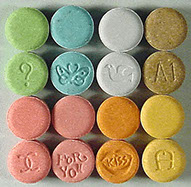
“MDMA (3,4-methylenedioxy-methamphetamine), popularly known as ecstasy or, more recently, as Molly, is a synthetic, psychoactive drug that has similarities to both the stimulant amphetamine and the hallucinogen mescaline. It produces feelings of increased energy, euphoria, emotional warmth and empathy toward others, and distortions in sensory and time perception.” Frequent use of Ecstasy may lead to long-lasting damage to serotonin producing neurons in the brain.
The National Institute on Drug Abuse published an update on Ecstasy/Molly in June 2020. More…

“Prescription drug abuse is the use of a medication without a prescription, in a way other than as prescribed, or for the experience or feelings elicited. According to several national surveys, prescription medications, such as those used to treat pain, attention deficit disorders, and anxiety, are being abused at a rate second only to marijuana among illicit drug users. The consequences of this abuse have been steadily worsening, reflected in increased treatment admissions, emergency room visits, and overdose deaths.” More…
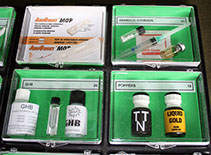
Anabolic steroids is the familiar name for synthetic substances related to the male sex hormones (androgens). They promote the growth of skeletal muscle (anabolic effects) and the development of male sexual characteristics (androgenic effects), and also have some other effects. Anabolic steroid abuse has been associated with a wide range of adverse side effects ranging from some that are physically unattractive, such as acne and breast development in men, to others that are life threatening, such as heart attacks and liver cancer. Most are reversible if the abuser stops taking the drugs, but some are permanent. More…
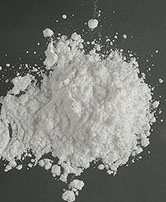
Cocaine stimulates the central nervous system. Immediate physical effects include dilated pupils and increased blood pressure, heart rate, respiratory rate and body temperature. Occasional use can cause a stuffy or runny nose, while chronic use may destroy nasal tissues. Following the “high” of extreme happiness and a sense of unending energy is a cocaine “crash” including depression, dullness, intense anger, and paranoia. Tolerance develops rapidly, and psychological and physical dependency can occur.
Crack or ‘rock’ is extremely addictive and produces the most intense cocaine high. The use of cocaine can cause kidney damage, heart attacks, seizures, and strokes due to high blood pressure. Death can occur by cardiac arrest or respiratory failure. More…
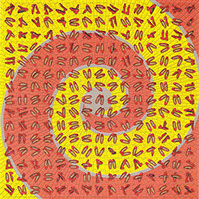
This category includes phencyclidine (PCP or “angel dust”), and amphetamine variants which have mind-altering effects. Perception and cognition are impaired, and muscular coordination decreases. Speech is blocked and incoherent. Chronic users of PCP may have memory problems and speech difficulties lasting 6 months to a year after prolonged daily use. Depression, anxiety, and violent behavior also occur. High psychological dependence on the drug may result in taking large doses of PCP. Large doses produce convulsions, comas, and heart and lung failure.
Lysergic acid dyethylamine (L.S.D. or “acid”), mescaline and psilocybin (mushrooms) cause illusions, hallucinations and altered perception of time and space. Physical effects include dilated pupils, elevated body temperature, increased heart rate and blood pressure, decreased appetite, insomnia and tremors. Psychological reactions include panic, confusion, paranoia, anxiety and loss of control. Flashbacks, or delayed effects, can occur even after use has ceased. More…

Inhalants are substances that produce chemical vapors that can be inhaled to induce a psychoactive, or mind-altering, effect. Although other abused substances can be inhaled, the term “inhalants” is used to describe a variety of substances whose main common characteristic is that they are rarely, if ever, taken by any route other than inhalation. Most inhalants produce a rapid high that resembles alcohol intoxication with initial excitation, then drowsiness, disinhibition, lightheadedness, and agitation. If sufficient amounts are inhaled, nearly all solvents and gases produce anesthesia, a loss of sensation, and even unconsciousness. More…

Methamphetamine is commonly known as “speed,” “meth,” and “chalk.” In its smoked form, it is often referred to as “ice,” “crystal,” “crank,” and “glass.” It is a white, odorless, bitter-tasting crystalline powder that easily dissolves in water or alcohol. Methamphetamine’s chemical structure is similar to that of amphetamine, but it has more pronounced effects on the central nervous system. Like amphetamine, it causes increased activity, decreased appetite, and a general sense of well-being. The effects of methamphetamine can last 6 to 8 hours. After the initial “rush,” there is typically a state of high agitation that in some individuals can lead to violent behavior. More…
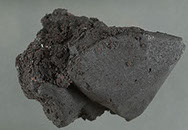
Narcotics include heroin, methadone, morphine, codeine, and opium. After an initial feeling of euphoria, usage causes drowsiness, nausea and vomiting. Effects of overdose include slow and shallow breathing, clammy skin, convulsions, coma and possible death. Physical and psychological dependence is high, and severe withdrawal symptoms include watery eyes, runny nose, loss of appetite, irritability, tremors, panic, cramps, nausea, chills, and sweating. Use of contaminated syringes may cause exposure to HIV/AIDS and hepatitis. More…
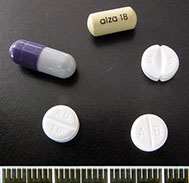
Amphetamines and other stimulants include “ecstasy,” “ice” and prescription medication such as Adderall and Ritalin. The physical effects produced are elevated heart and respiratory rates, increased blood pressure, insomnia and loss of appetite. Sweating, headaches, blurred vision, dizziness, and anxiety may also result from use. High dosage can cause rapid or irregular heartbeat, tremors, loss of motor skills and even physical collapse. Long-term use of higher doses can produce amphetamine psychosis which includes hallucinations, delusions and paranoia. More…
The Fraternal Health and Safety Initiative encourages all of the members of our Consortium Fraternities and Sororities to consider the facts about other drug use and strategies they can use to lower their risk. If you are concerned about your own usage, or that of one of your brothers, we encourage you to visit the Self-Assessment section of this site. This serves as a tool where individual members can get feedback in regards to their usage and behaviors. These assessments can be used by the executive leadership or chapter standards boards in providing educational sanctions for their members, as well.
Source: Gordie Center for Substance Abuse Prevention at the University of Virginia
Favor & Company
10555 E Dartmouth Avenue, Suite 330
Aurora, CO 80014-2664
(303) 750-1122
(800) 344-7335
info@FavorAndCompany.com